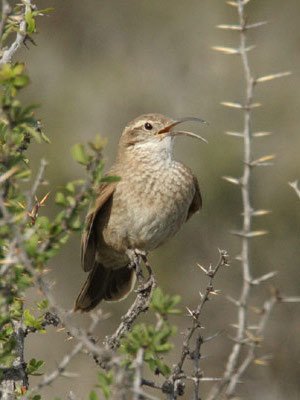Mendoza

Birding Mendoza
Mendoza is one of the 23 provinces of Argentina, located in the western central part of the country in the Cuyo region. Neighboring provinces are from the north clockwise San Juan, San Luis, La Pampa and Neuquén. To the west is Chile.
The geography of the province descends from the 6959 m of the Aconcagua mountain to the semi-flat lands of the east. A series of longitudinal valles such as the Uspallata, separate the Andes from the Precordillera lower mountains. To the east, the Cuyean plains are crossed by tributaries of the Desaguadero River. Other important rivers include Mendoza River, Tunuyán River, Diamante River and the Atuel River.The climate is continental, sunny and dry in the entire territory of the province, with warm summers and relatively cold winters. The arid soil due to the scant precipitation and the great temperature difference between day and night allows mainly xerophytes and few trees to grow. The annual precipitation lies between 150 and 350 mm, and hail is not uncommon and an important problem in the regional viticulture. There are fertile lands surrounding the basins of the many rivers, born in glaciers of the Cordillera.Different wind fronts affect the landscape, mainly the Zonda wind, but also the mild Pampero, the warm Viento Norte and in winter the very rare Sudestada from the Southeast. This latter one affects mostly the pampas.
Famed worldwide for its viticulture the Mendoza economy is, however, quite diversified. Agriculture, to be sure, has long accounted for much of Menodoza’s foreign exchange earnings (followed closely by tourism, mainly from Chile). Besides wine, other important crops (mainly for the Argentine market) are apples, pears, tomatoes, onions, plums, olives, cherries, peaches and quince. Apiculture, with 30,000 beehives, is another growing activity favoured by Mendoza’s dry weather.Mining is important to the Mendoza economy and has grown sharply in recent years. Fourteen percent of the national reserves of petroleum are in Mendoza, also home to large-scale mining of lime and uranium.
-
Wikipedia
GNU Free Documentation License
Information
-
Number of bird species: 372
(As at May 2019)
-
NR La Reserva Divisadero Largo
WebpageSatellite ViewLa Reserva Divisadero Largo was declared Adrea Protected in 1983. This reserve, 492 hectares, is located in the estribores of General San Martin Park, just 8 km. West of the capital of Mendoza, in the foothills of the Andes. -
PP Parque Aconcagua
WebsiteSatellite ViewThe Aconcagua Provincial Park has peaks over 5000m so imposing rising toward the open sky, reaching its peak in the Northern summit of Cerro Aconcagua (6962m -
PP Parque Provincial Tupungato
InformationSatellite ViewJust 110 km from the city of Mendoza is the Tupungato Provincial Park, a site that has a stunning landscape of high tourist value. Being a protected area is home to rivers, streams, wildlife, preserving the condor and the guanaco...
-
Trogon Tours
Tour OperatorTrogon Tours is the official nature travel company of Birding Argentina, the leading birding and nature specialists for southern South America since 2001
